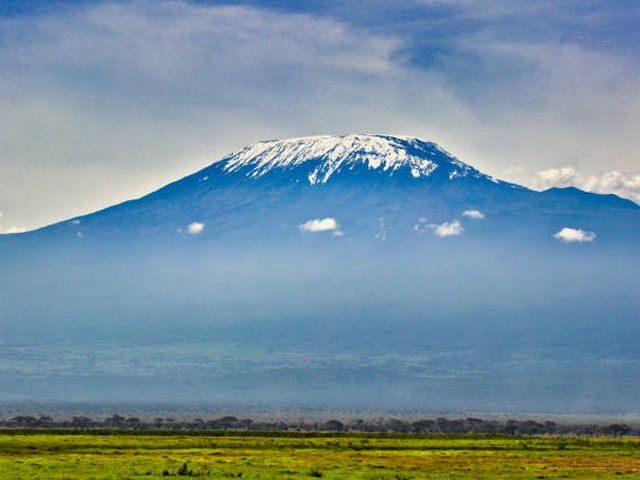Kilimanjaro Trekking Safety With Children: Your Ultimate Guide
Embarking on a trek up the majestic Mount Kilimanjaro is a transformative adventure for anyone. But when it involves children, it transcends adventure—it becomes a life lesson in resilience, beauty, and the wonders of nature. At Kilimanjaro Centre for Trekking and Ecotourism (KCTE), we understand that safety is paramount, especially when young explorers are involved. This blog will guide you through ensuring a safe and exhilarating Kilimanjaro experience for you and your children.
Why Choose Kilimanjaro for a Family Trekking Experience?
Kilimanjaro, Africa's highest peak, is not just a mountain; it's a beacon of adventure that attracts trekkers from all over the globe. Its gradual slopes and ability to be climbed without technical gear make it uniquely suitable for families, including those with children. The journey through five distinct ecological zones—from rainforest to alpine desert—offers educational and inspirational experiences that are unmatched.
Preparing for the Trek: Safety First
Health Checks and Fitness
Before you even pack your hiking boots, ensuring that all family members, especially children, are physically and mentally prepared for the climb is crucial. Consult with a healthcare provider to clear your children for such a high-altitude trek. Encouraging regular walks, hikes, or cardiovascular activities at home can also prep their bodies for the big adventure.
Choosing the Right Route
At KCTE, we recommend the Marangu or Rongai routes for families with children. These routes offer a more gradual ascent and shorter walking days, which are favorable for younger climbers. Whichever route you choose, KCTE ensures guided paths that prioritize your child's safety and enjoyment.
Gear Up
Equipping your children with the right gear is crucial. This includes thermal clothing, a good quality sleeping bag rated for low temperatures, UV protection sunglasses, and a comfortable, well-fitting backpack. Don't forget waterproof boots with ankle support to prevent injuries!
On the Mountain: Ensuring Safety Every Step of the Way
Acclimatization
Kilimanjaro's high altitude can affect anyone, regardless of age. That's why acclimatization is a key factor in a successful and safe trek. KCTE plans itineraries that allow for gradual ascent and include rest days, helping your children's bodies adjust to the altitude safely and comfortably.
Hydration and Nutrition
Keeping hydrated is essential on Kilimanjaro. Encourage your children to drink water regularly throughout the day. Nutritious meals are equally important, and KCTE provides balanced, energy-boosting meals suitable for young trekkers.
Daily Health Monitoring
Our experienced guides at KCTE are trained in first aid and perform daily health checks to monitor the well-being of all trekkers, with particular attention to the children. Symptoms of altitude sickness can often be managed if caught early, ensuring the safety and health of your family throughout the trek.
Lessons Beyond Trekking
Climbing Kilimanjaro with children is not just about reaching the summit; it's about the lessons learned on the journey. The trek teaches resilience, respect for nature, and the importance of perseverance. These invaluable lessons will stay with your children long after they descend the mountain.
After the Descent: Celebrating and Reflecting
Reaching the summit of Kilimanjaro is a momentous achievement for anyone, but sharing this with your children can be one of the most rewarding experiences as a parent. Celebrate this accomplishment together and take the time to reflect on the journey. This adventure could inspire a lifelong passion for trekking and the outdoors in your children.
Why Book With Kilimanjaro Centre For Trekking and Ecotourism (KCTE)?
At KCTE, we don't just guide trekkers up a mountain; we provide a comprehensive, safe, and engaging trekking experience tailored to families. Our commitment to safety, deep knowledge of the mountain, and passion for what we do make us the best choice for your family's Kilimanjaro adventure.
FAQs About Trekking Kilimanjaro With Children
Q: What is the minimum age for children to climb Kilimanjaro?
A: The Tanzanian government suggests that children be at least 10 years old to climb Kilimanjaro. However, the decision should also be based on your child's physical ability and mental readiness.
Q: How long does it take to climb Kilimanjaro with children?
A: We recommend a slower pace for families with children, typically opting for a 7-8 day itinerary. This pace allows for better acclimatization and maintains the youngsters' energy levels.
Q: What are the essential items to pack for children?
A: Besides warm clothing and sturdy boots, pack sunscreen, lip balm, hats, snacks they enjoy, and perhaps a favorite book or game for downtime in the camps.
Q: Can my child carry their own backpack?
A: Depending on their age and strength, children can carry a small pack with their essentials. However, it's important not to overload them to ensure they enjoy the trek.
Q: Is there a rescue service on Kilimanjaro?
A: Yes, KCTE coordinates with Kilimanjaro National Park's rescue services to ensure that immediate help is available in the unlikely event of an emergency.
In conclusion, trekking Kilimanjaro with children is not only possible but can be a profound journey that brings a family together. With the right preparation, a trusted partner like Kilimanjaro Centre for Trekking and Ecotourism, and a spirit of adventure, you can provide your children with an unforgettable lesson in courage, nature, and the joy of achieving something great together. Ready to start planning your family's Kilimanjaro adventure? Contact KCTE today, and let's make lifetime memories together on the roof of Africa!




